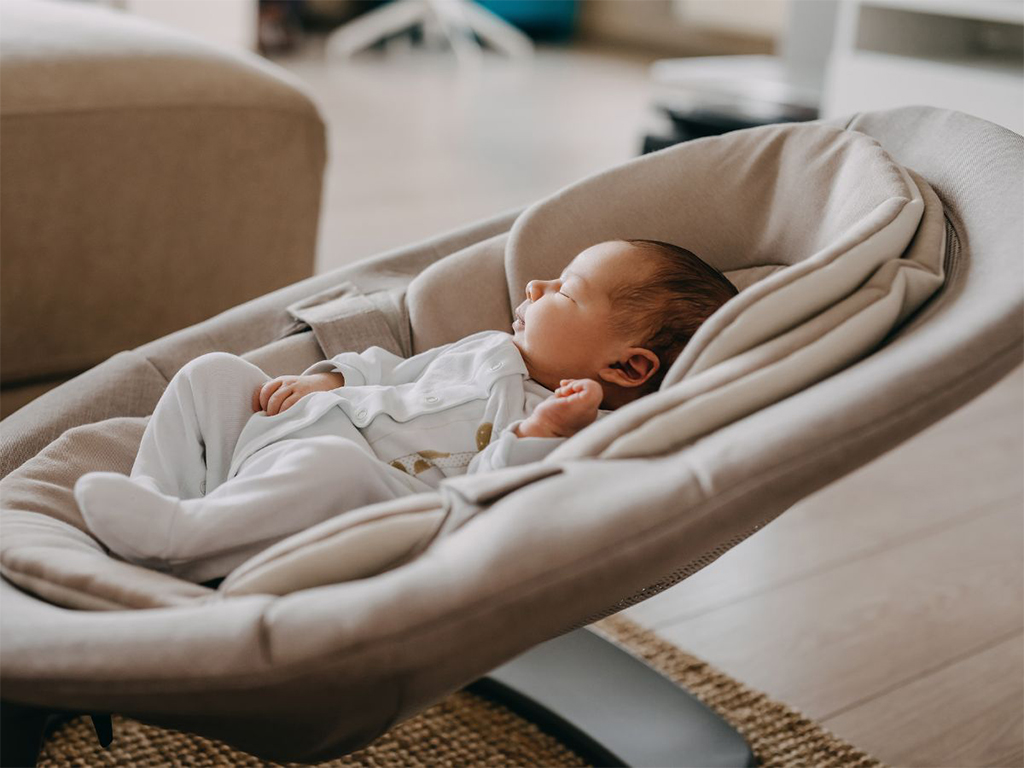
Bringing a newborn home is a joyful yet challenging experience, especially when it comes to establishing good sleep habits. Sleep is crucial for your baby’s development and your own well-being. Understanding how to help your newborn sleep better can make a significant difference. In this blog, we will explore three effective strategies to help your newborn sleep well.
1) Create a Consistent Sleep Routine
Establishing a consistent sleep routine is one of the most effective ways to help your newborn sleep better. Babies thrive on routine and predictability, which helps them feel secure and understand when it’s time to sleep. Here are some tips on creating a consistent sleep routine:
a. Establish a Bedtime Routine

- Bath Time: A warm bath can be soothing and help relax your baby before bed.
- Gentle Massage: A gentle massage with baby lotion can calm your baby and prepare them for sleep.
- Feeding: A feeding session can help ensure your baby is full and content before bed.
- Storytime or Lullabies: Reading a short story or singing a lullaby can create a peaceful atmosphere conducive to sleep.
b. Consistent Sleep Environment

- Dark Room: Use blackout curtains to keep the room dark, mimicking nighttime even during naps.
- White Noise: A white noise machine can help drown out household noises and create a consistent auditory environment.
- Comfortable Temperature: Keep the room at a comfortable temperature, typically between 68-72°F (20-22°C).
c. Regular Sleep Schedule

Try to put your baby to bed at the same time each night. Consistency helps regulate your baby’s internal clock and improves their overall sleep quality. Additionally, monitor your baby’s nap times during the day to ensure they are getting enough rest without disrupting nighttime sleep.
2) Utilize a Baby Swing

A baby swing can be a helpful tool in soothing your newborn and encouraging sleep. Swings provide gentle rocking motions that mimic the sensations your baby felt in the womb, which can be very comforting. Here’s how to use a baby swing effectively:
a. Choosing the Right Baby Swing
Select a baby swing that meets safety standards and offers features that cater to your baby’s needs. Look for swings with:

Click here for product preview: Crolla Comfeo Auto Baby Swing
- Multiple Speed Settings: Different babies have different preferences for rocking speeds.
- Reclining Positions: A swing with multiple reclining positions can accommodate your baby’s comfort and developmental stages.
- Secure Harness: Ensure the swing has a secure harness to keep your baby safe while swinging.
b. Using the Baby Swing Safely
Safety is paramount when using a baby swing. Follow these guidelines to use the swing safely:

- Supervised Use: Always supervise your baby while they are in the swing. Never leave them unattended.
- Time Limits: Limit the time your baby spends in the swing to prevent over-reliance on it for sleep.
- Proper Positioning: Ensure your baby is positioned correctly in the swing to avoid any risk of suffocation or discomfort.
c. Incorporating the Swing into the Sleep Routine

- Pre-Nap Soothing: Use the swing to soothe your baby before naptime, helping them to relax and get drowsy.
- Nighttime Comfort: If your baby wakes up during the night, you can use the swing to help them settle back down to sleep.
While a baby swing can be helpful, it should not replace a crib or bassinet for extended sleep periods. Always transfer your baby to their crib or bassinet once they are asleep.
3) Practice Safe Sleep Techniques
Ensuring your baby sleeps safely is crucial for their well-being. Following safe sleep practices can help reduce the risk of Sudden Infant Death Syndrome (SIDS) and other sleep-related issues. Here are some key safe sleep techniques:

a. Back to Sleep
Always place your baby on their back to sleep, whether it’s for naps or nighttime sleep. Sleeping on the back reduces the risk of SIDS significantly.

b. Use a Firm Sleep Surface
Your baby’s crib or bassinet should have a firm mattress with a fitted sheet. Avoid using soft bedding, pillows, or stuffed animals in the crib, as they can pose suffocation hazards.

c. Room Sharing Without Bed Sharing
Expert recommends room sharing with your baby for at least the first six months. Keep your baby’s crib or bassinet in your room, but avoid bed-sharing to prevent accidental suffocation or injury.

Helping your newborn sleep well involves creating a consistent sleep routine, using tools like a baby swing effectively, and practicing safe sleep techniques. By implementing these strategies, you can help your baby develop healthy sleep habits, ensuring they get the rest they need for growth and development. Remember, each baby is unique, so it may take some trial and error to find what works best for your little one. Patience and persistence are key to fostering a positive sleep environment for your newborn.




